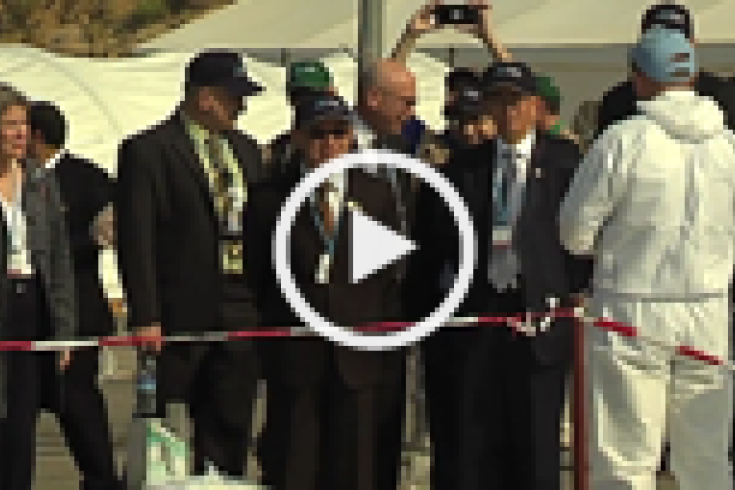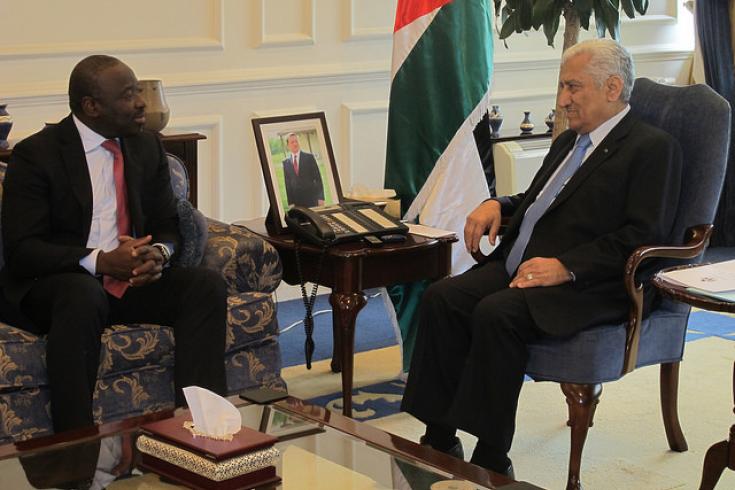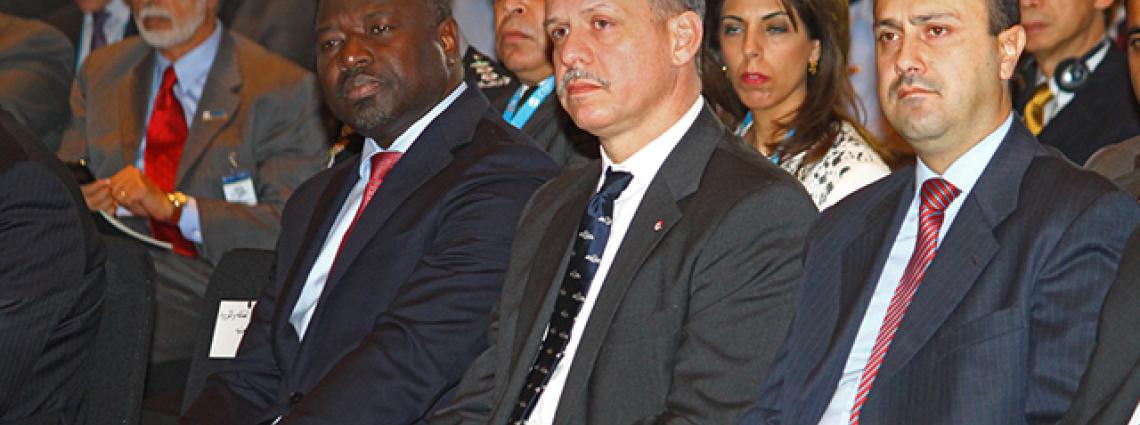High-level group observes IFE14’s field activities
15 November 2014
HRH Prince Feisal Al-Hussein of Jordan (right) and CTBTO Executive Secretary Lassina Zerbo.

Watch the video
Hosting IFE14 is testimony to Jordan's dedication to contribute to nuclear disarmament and non- proliferation. Jordan is showing leadership and stability in a crisis-stricken region. IFE14 is a milestone and a key building block in establishing the CTBT verification regime.
Deterring potential CTBT violators
The main purpose of the visit on 15 November was to allow the high-level group to observe first-hand some of the field activities being carried out in the inspection area during IFE14. Forty experts from the CTBTO and its Member States are using state-of-the-art techniques during the simulated inspection phase, including instruments to detect traces of relevant radionuclides on and beneath the ground as well as in the air. Other techniques scan the ground in frequencies invisible to the human eye.
Minister of Energy and Mineral Resources, Mohammad Hamed, addressing dignitaries in the Dead Sea region, Jordan.

In Jordan, Zerbo held bilateral meetings with Prime Minister Abdullah Ensour (image), Foreign Minister Nasser Judeh, the Minister of Energy and Mineral Resources, Mohammad Hamed, as well as the Minister of State for Media Affairs, Mohammad Hussein Al Momani.
IFE14 will demonstrate our capability to detect a hidden nuclear test through an on-site inspection, creating confidence in the CTBT verification regime which will encourage the remaining States to sign and ratify.
Jordan’s commitment to international peace and security
CTBTO Executive Secretary Lassina Zerbo addressing dignitaries before visiting the base of operations for IFE14.
IFE14 is a joint success for the CTBTO and Jordan. IFE14 sends a message of peace and stability to other countries in the region, a message that Jordan will take to the Security Council and to the Organization of Islamic States.
Executive Secretary Zerbo briefing journalists from the Middle East at a WMD workshop in Amman on 13 November 2014.
Four years of preparation
The CTBTO has carried out a series of build-up exercises in Austria and Hungary to practice specific methods and techniques of an OSI over recent years, pre-IFE14 field tests in Jordan and a workshop in China in 2013 to prepare for the exercise. See IFE14 webpage for more information.
Participants at the high-level event being briefed about IFE14 activities.
Generous support of Member States and the EU
IFE14 will continue until 9 December 2014. At the end of the exercise an evaluation will assess the progress made regarding the CTBTO’s operational capacity to conduct an OSI since the first such exercise – IFE08 - was carried out in Kazakhstan in 2008. IFE14 will also identify areas that require further development and training.
Jordan was selected by consensus by the CTBTO’s 183 Member States, sending a political message that Jordan is a hub of peace and stability.
For more follow our IFE14 Field Blog for updates and read our Frequently Asked Questions . Arabic version here
15 Nov 2014
